NASA’s Kennedy Space Center in Florida has two of the largest vehicles ever built on treads. Crawler-transporter No. 1 and crawler-transporter No. 2 (CT-1 and CT-2) have carried rockets and spacecraft to the launch pad for the last 50 years.
Plus, they’re still being modified and upgraded by the Ground Systems Development and Operations Program (GSDO) they are ready to continue their hard work: CT-1 is being strengthened to handle commercially operated rockets and spacecraft, while CT-2 will be able to carry the SLS, NASA’s Space Launch System heavy-lift rocket, which is under design, and new Orion spacecraft to the launch pad.
The main parts of the crawlers were manufactured by the Marion Shovel Company in Marion, Ohio, and shipped to Kennedy Space Center in 1964 where final assembly took place. The crawlers started their service in 1965 to support the Apollo Program. The first practical use of a crawler was in August 1967, when the first Saturn V rocket for Apollo 4, an uncrewed mission, was transported to Launch Pad 39A (before that rocket stages were erected and assembled at the pad). Altogether the crawlers carried 19 Saturn rockets to their pads until 1975, supporting the Skylab and Apollo-Soyuz Test Project missions as well. Then, between 1981 and 2011, the two NASA workhorses transported Space Shuttles 135 times on their 6.8km trek from the vehicle Assembly Building to Launch Pad 39A or 39B and back, at a maximum speed of 1.6km/h loaded, and about 3.2km/h unloaded, burning 568 litres of diesel oil per mile during their super slow ride.
And what an amazing weight they carried every time! A Saturn V rocket and Apollo capsule attached to the mobile launcher plus the launch umbilical tower was 5.6 million kilograms, while a space shuttle with solid rocket boosters and external fuel tank on top of the mobile launcher platform was five million kilograms. The two monstrous vehicle — each 40m long and 35m wide — have racked up 4000km so far moving on their four double-tracked crawlers, using laser guidance and levelling systems in order to keep space vehicles vertical, even on the ramps leading to the launch pads. Recent modifications will enable the crawlers to continue supporting human spaceflight for another 20 years. Provided by NASA the following characteristics of the crawlers show what a highly complicated system we are talking about:
The unique features of the giant vehicles include 16 traction motors, two alternating current generators, two direct current generators powered by diesel engines, and two control cabs each to drive the vehicles forward and backward. The jacking, equalizing and levelling (JEL) system, among other systems, are monitored and controlled from inside the crawler’s control room. The JEL system keeps the upper deck and pick up points level at all times, even when travelling up steep inclines to the top of the pads, to prevent its rocket payload from toppling. The crawlers’ other unique features are the giant tracks, or treads, that propel the vehicles along. There are eight treads, two per corner, with each tread containing 57 “shoes.” Each shoe is 7.5 feet long and 1.5 feet wide and weighs 2,100 pounds. The original shoes were provided by Marion and were replaced in 2004 with new shoes manufactured by ME Global Manufacturing in Duluth, Minnesota. In 1985 a laser docking system was added to the crawlers, allowing them to dock within 0.50 to 0.25 inches of the fixed “dead zero” position at the launch pad and in the VAB. [… ]
In 2012, CT-2’s original alternating current generators and associated parts were removed. Two new 1,500 kilowatt diesel engines and generators were installed. Work continued over the next two years to modify and upgrade the crawler to extend the life of its operating systems, including the installation of 88 new traction roller bearing assemblies, a modified lubrication delivery system and a new temperature monitoring system. In January 2014, CT-2 passed the first phase of an important milestone by completing a test of the new traction roller bearings on two of the massive vehicle’s truck sections, A and C, followed by upgrades and testing on truck sections, B and D. The JEL cylinders, electronics, cables and hydraulic components are being upgraded to increase load-carrying capacity. The upgrades are necessary to increase the lifted-load capacity of the crawlers from 12 million pounds to 18 million pounds to support the weight of the SLS and Orion spacecraft on the mobile launcher.
Finally, before we move on the pictorial history of CT-1 and CT-2 here is a cool infographic on the crawlers of NASA:

Source: NASA
1964: Two rare photos of constructing the crawler transporter for Saturn rockets
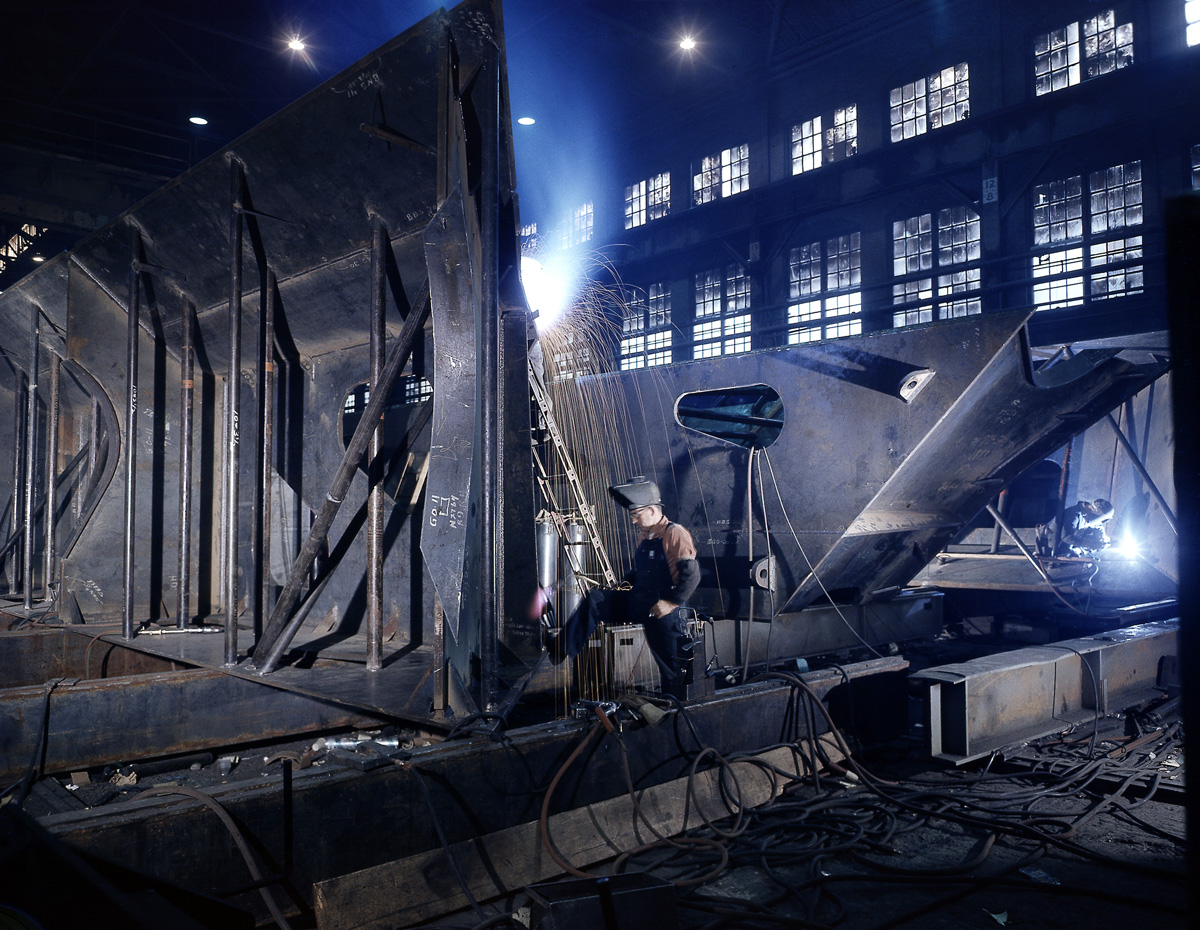
Picture: NASA
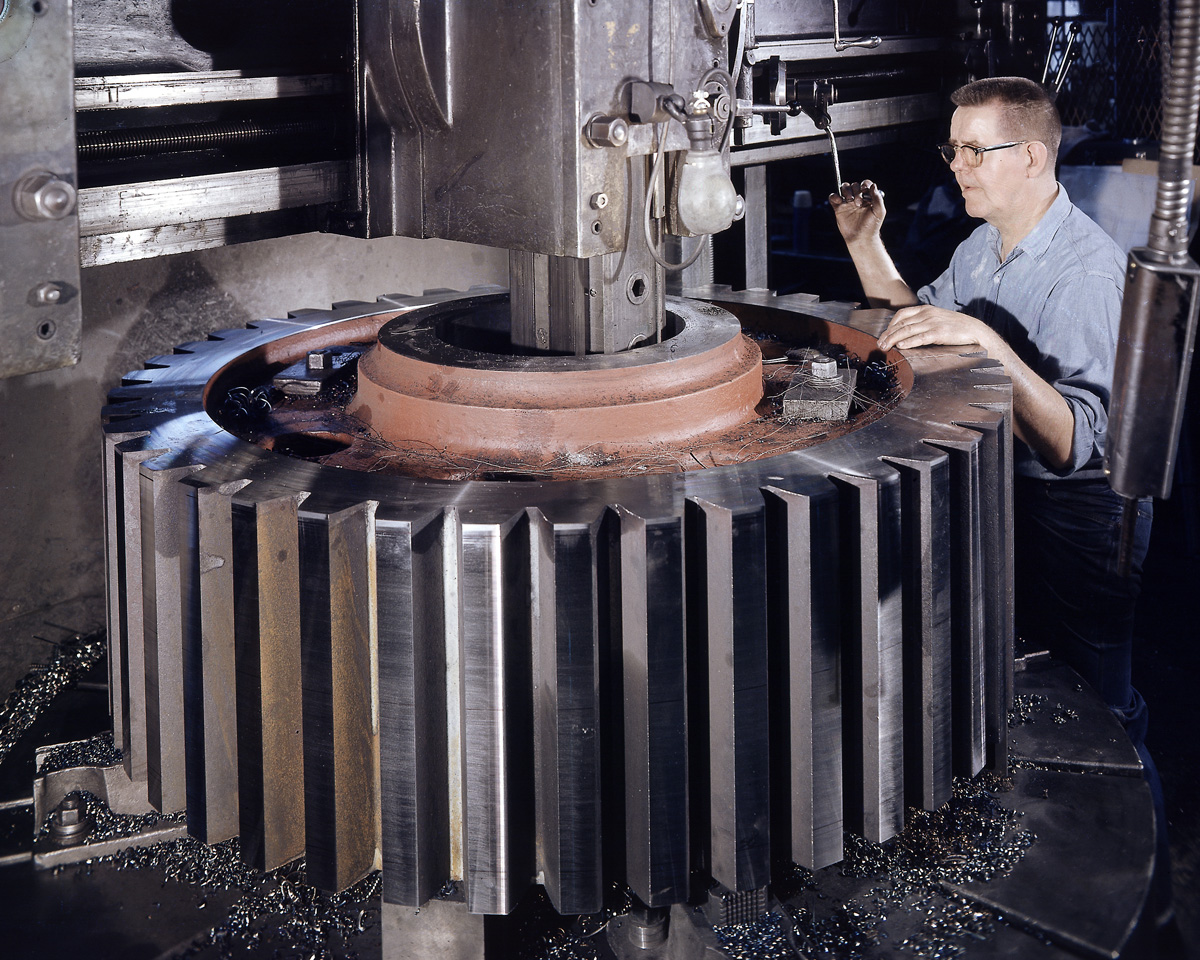
Picture: NASA
November 9, 1964: Aerial view of the first crawler almost complete.
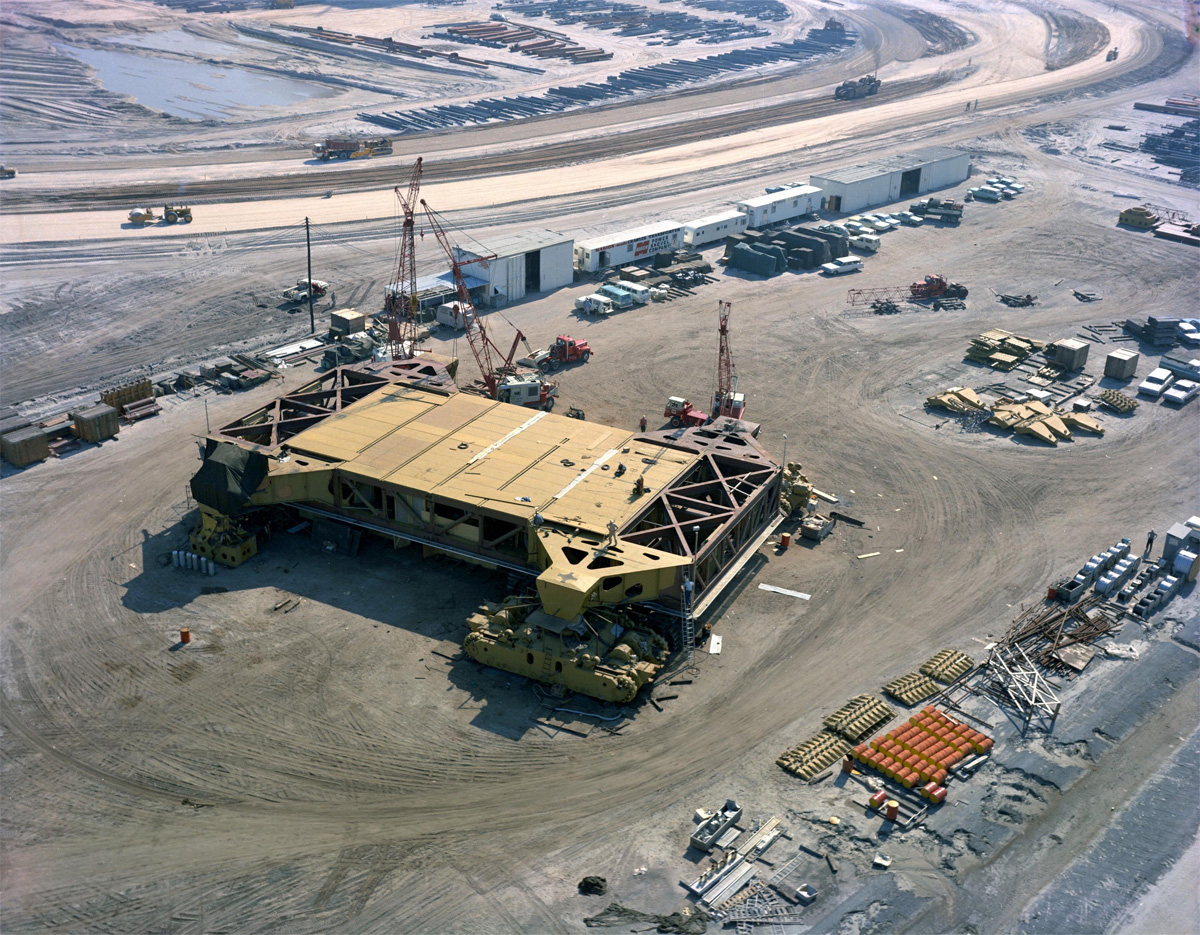
Picture: NASA
August 26, 1967: The Apollo 4 (Spacecraft 017/Saturn 501) stack and its mobile launch tower atop a crawler-transporter moving from the Vehicle Assembly Building toward Pad A, Launch Complex 39.
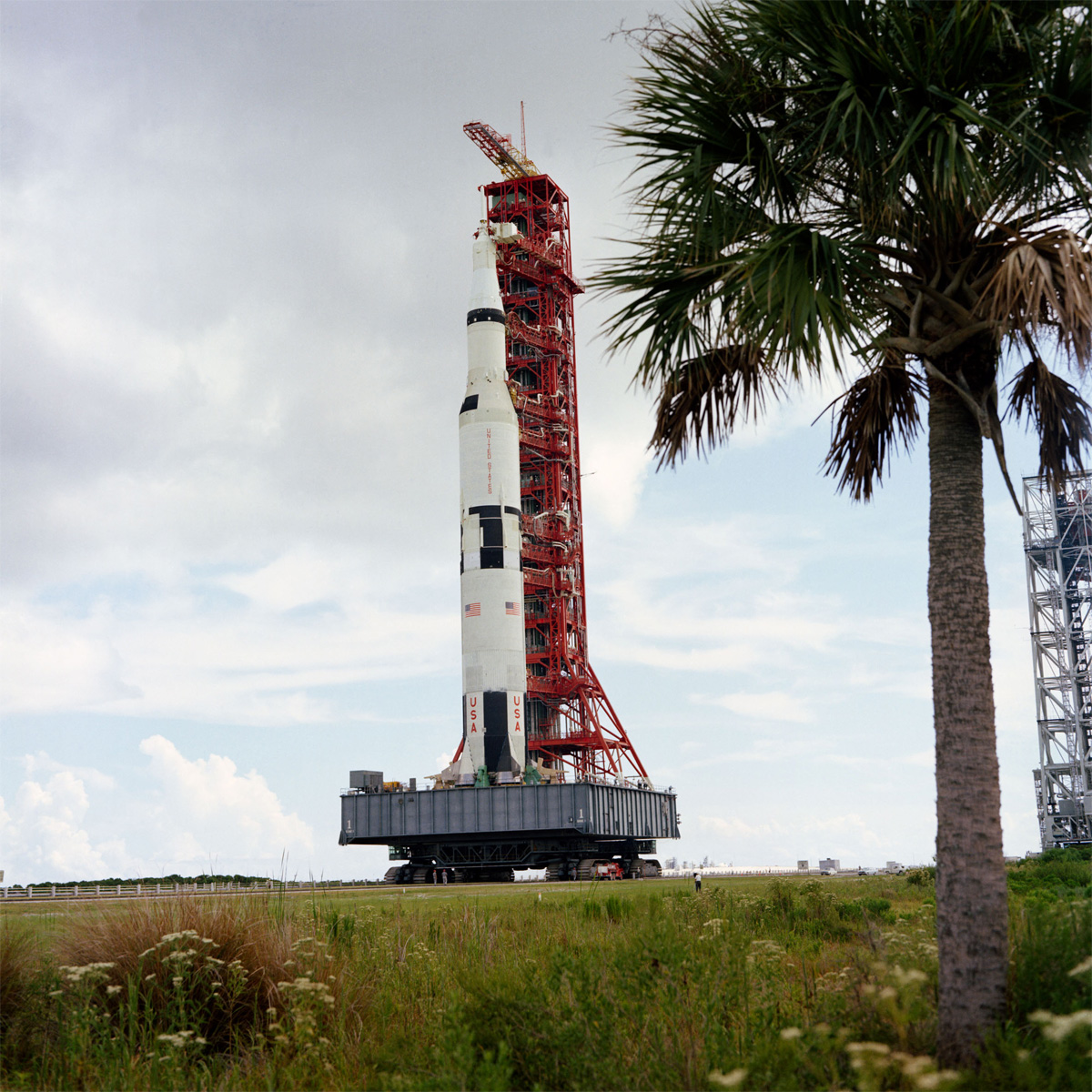
Picture: NASA
May 20, 1969: The Transporter nears the top of the five per cent incline at Launch Complex 39A with the Apollo 11 Saturn V rocket.
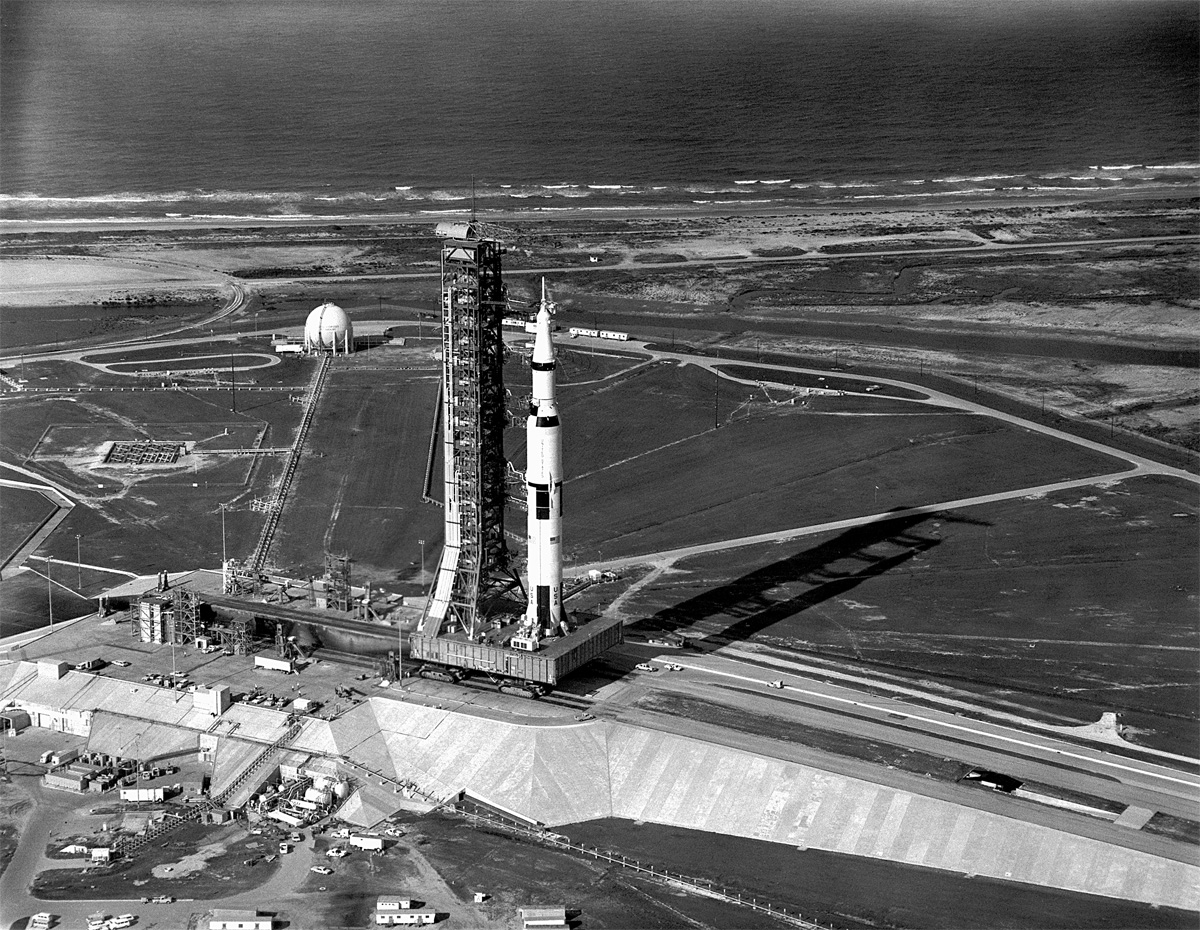
Picture: NASA
November 9, 1970: Apollo 14 (Spacecraft 110/Lunar Module 8/Saturn 509) space vehicle leaving the Vehicle Assembly Building (VAB) atop the huge crawler-transporter, heading to Pad A.
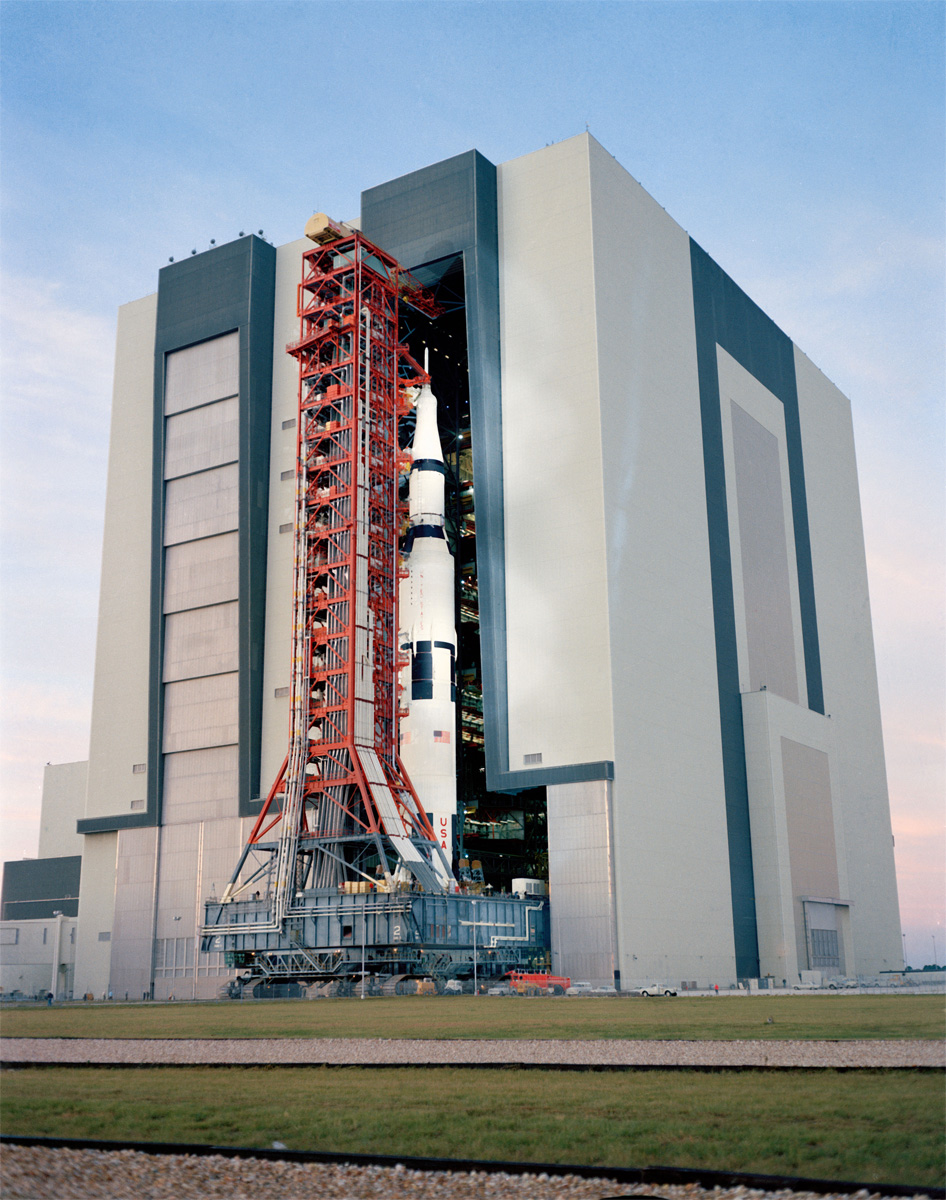
Picture: NASA
July 15, 1989: The Space Shuttle Columbia arrives at Pad 39B early in the morning after being rolled out of the Vehicle Assembly Building the night before.
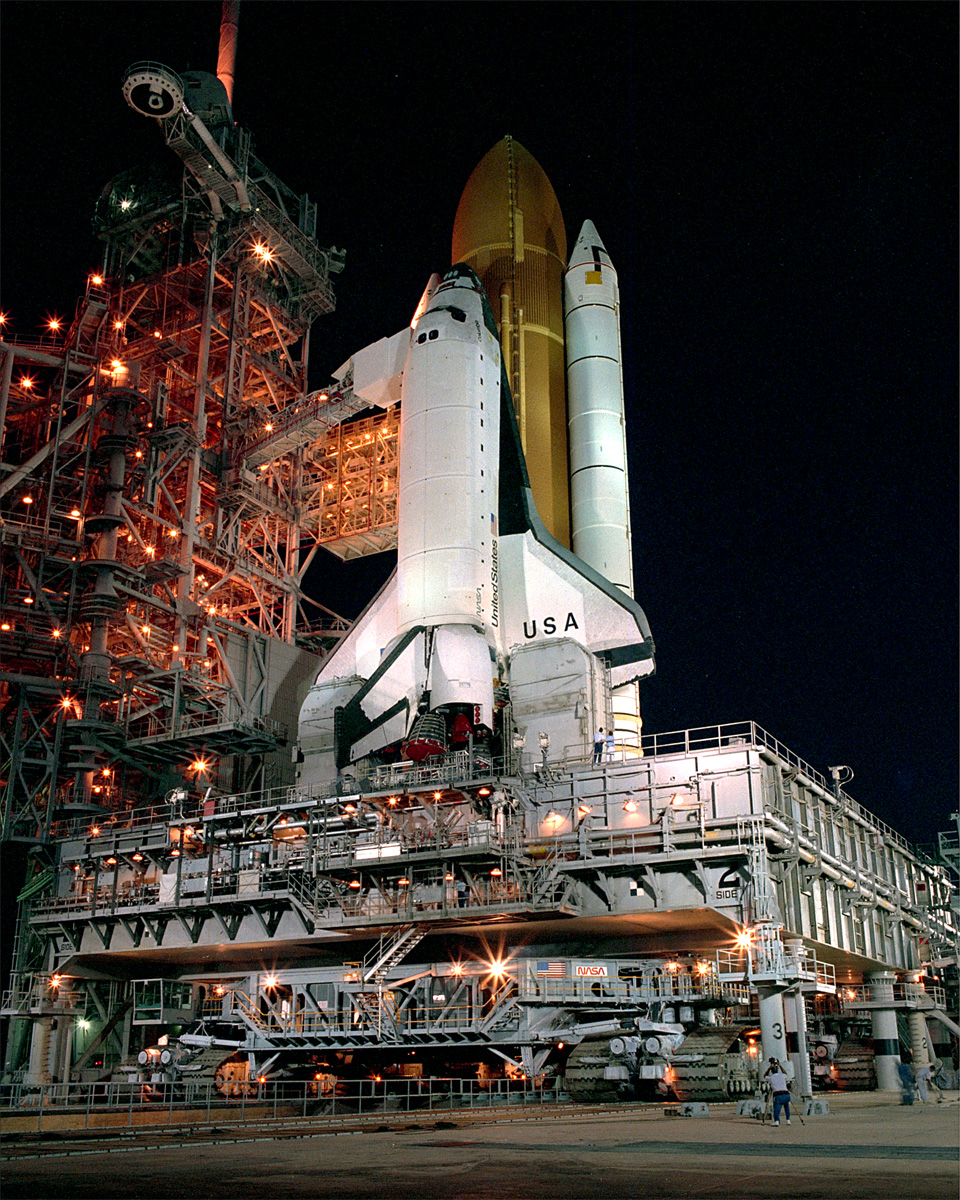
Picture: NASA
February 7, 1993: The Space Shuttle Columbia rolls to Launch pad 39A from the Vehicle Assembly Building for the upcoming STS-55 flight.

Picture: NASA
August 20, 1996: The Space Shuttle Atlantis heads to Launch Pad 39A. The journey to the launch pad takes approximately six hours to complete.
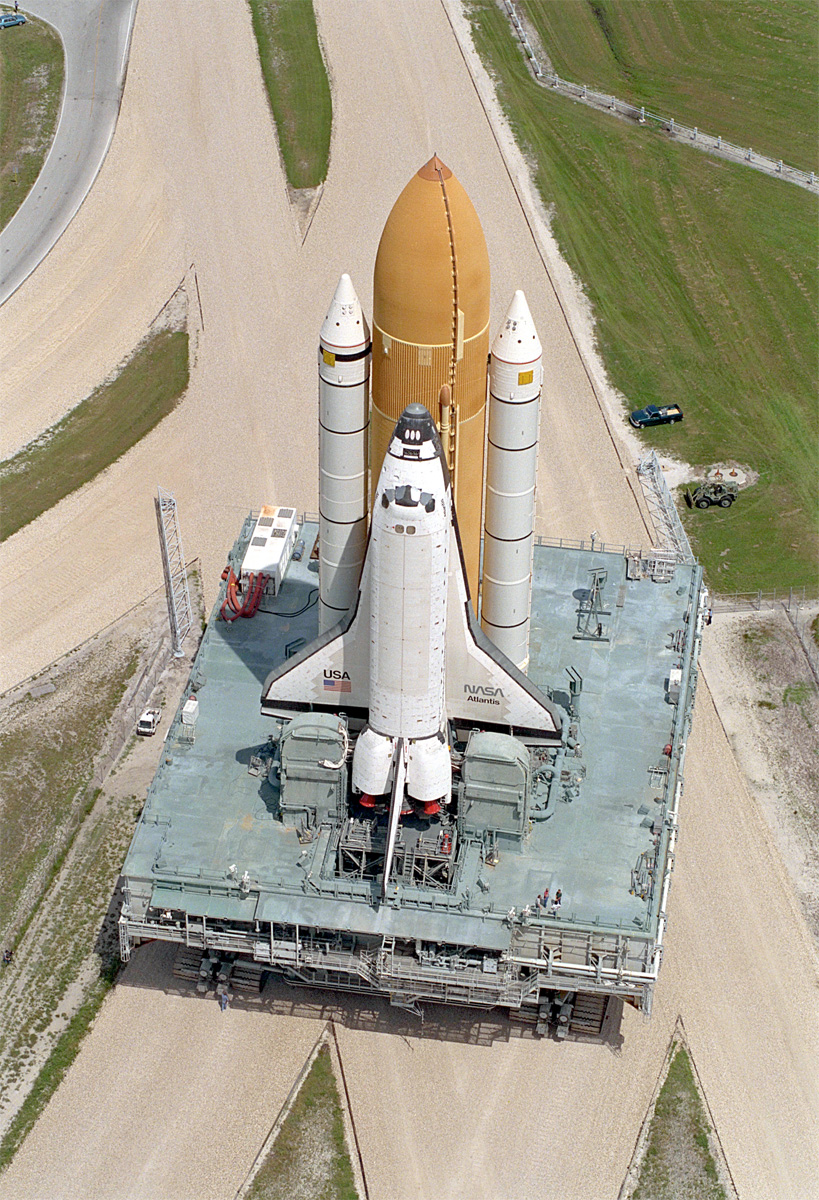
Picture: NASA
August 6, 1998: Aerial view of the Crawler Transporter Maintenance Building and the two crawler transporters.
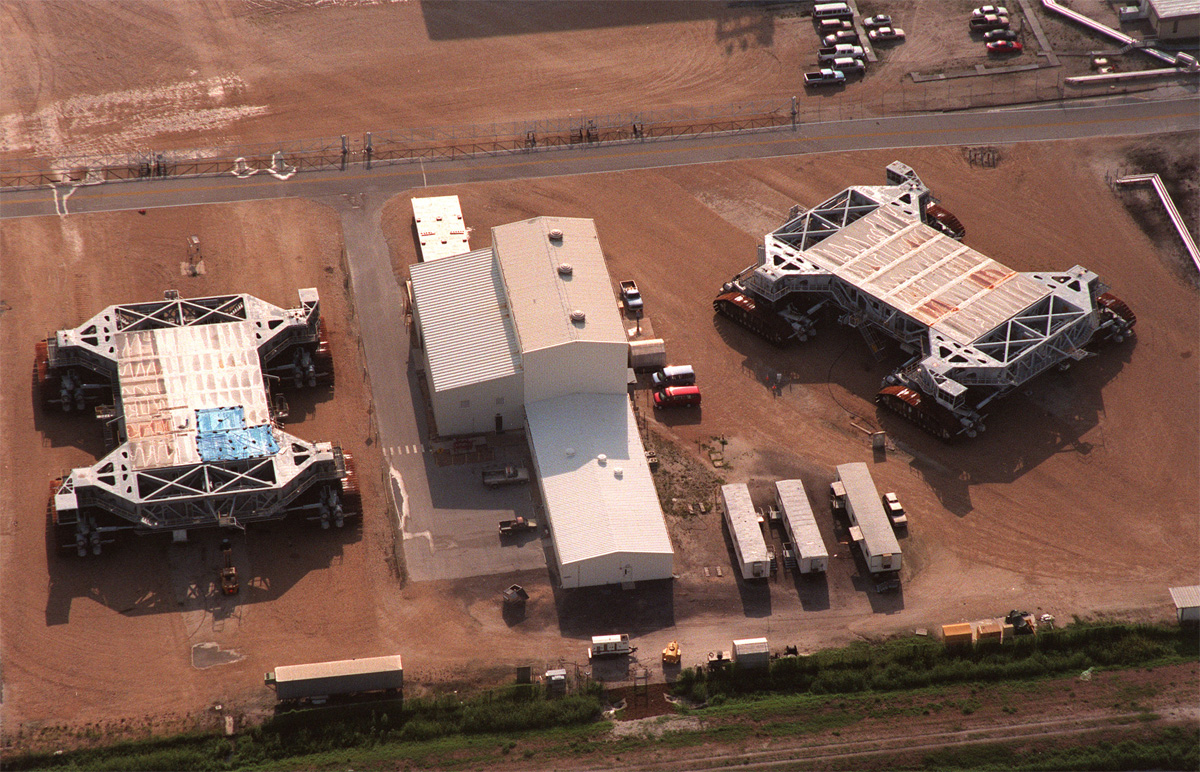
Picture: NASA
August 18, 2003: Inside the cab of CT-2, driver Sam Dove, with United Space Alliance, operates the vehicle on a test run to the launch pad.
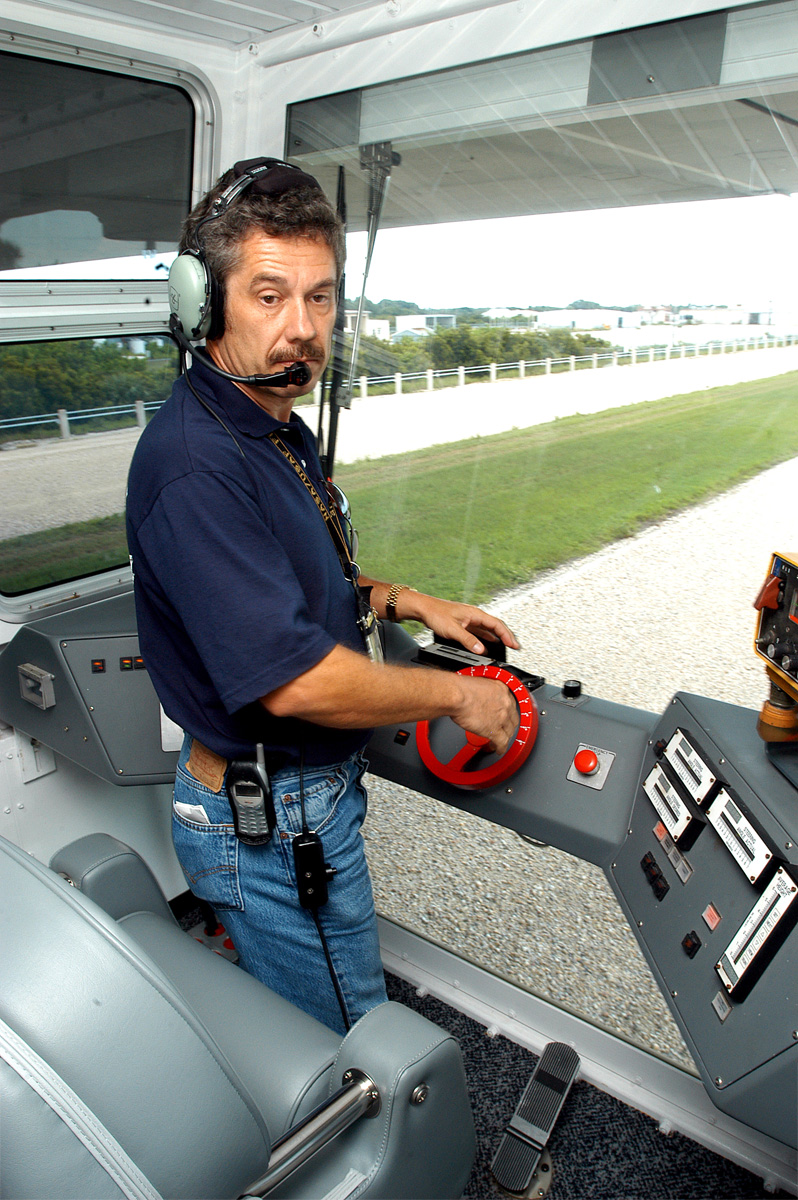
Picture: NASA
November 21, 2003: Mobile Launcher Platform (MLP) number 3 and a set of twin solid rocket boosters, atop the crawler-transporter, inch along the crawlerway in support of the second engineering analysis vibration test on the crawler and MLP.
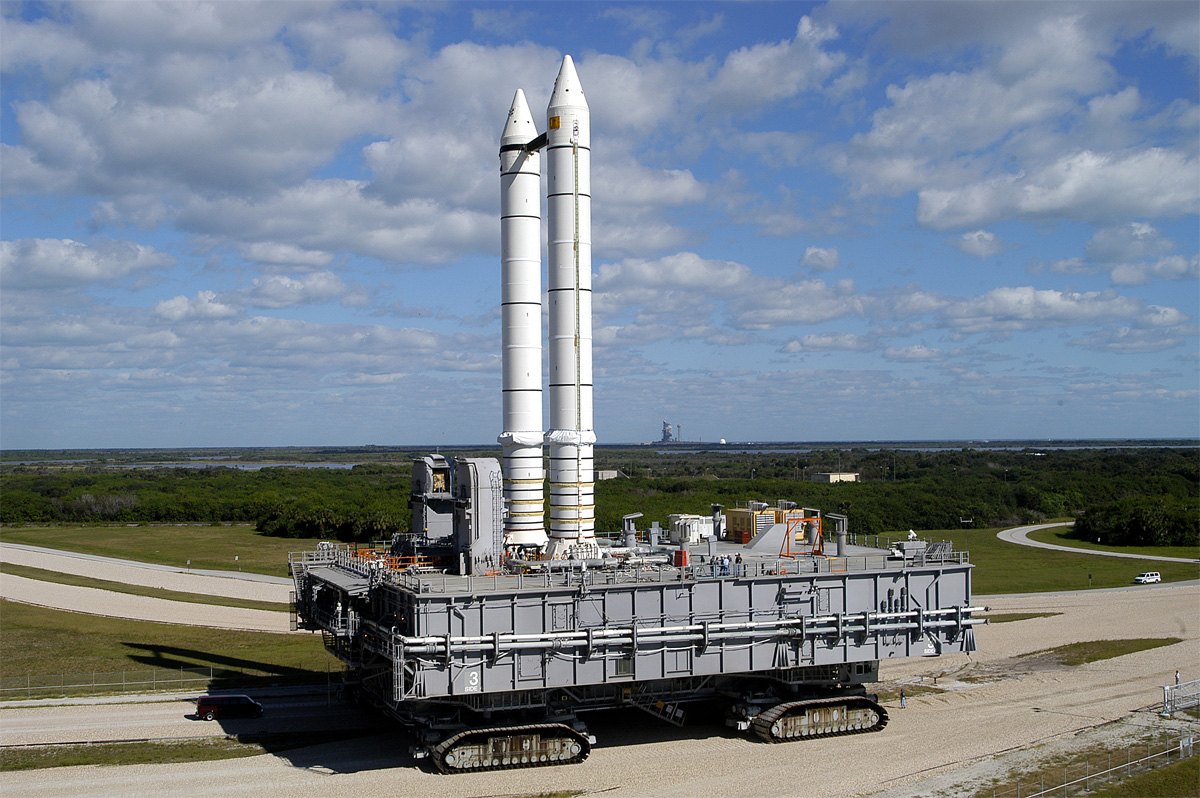
Picture: NASA
August 30, 2006: The massive mobile launcher platform and Space Shuttle Atlantis above it nearly dwarf the crawler-transporter below them. The crawler alone is 20 feet high.
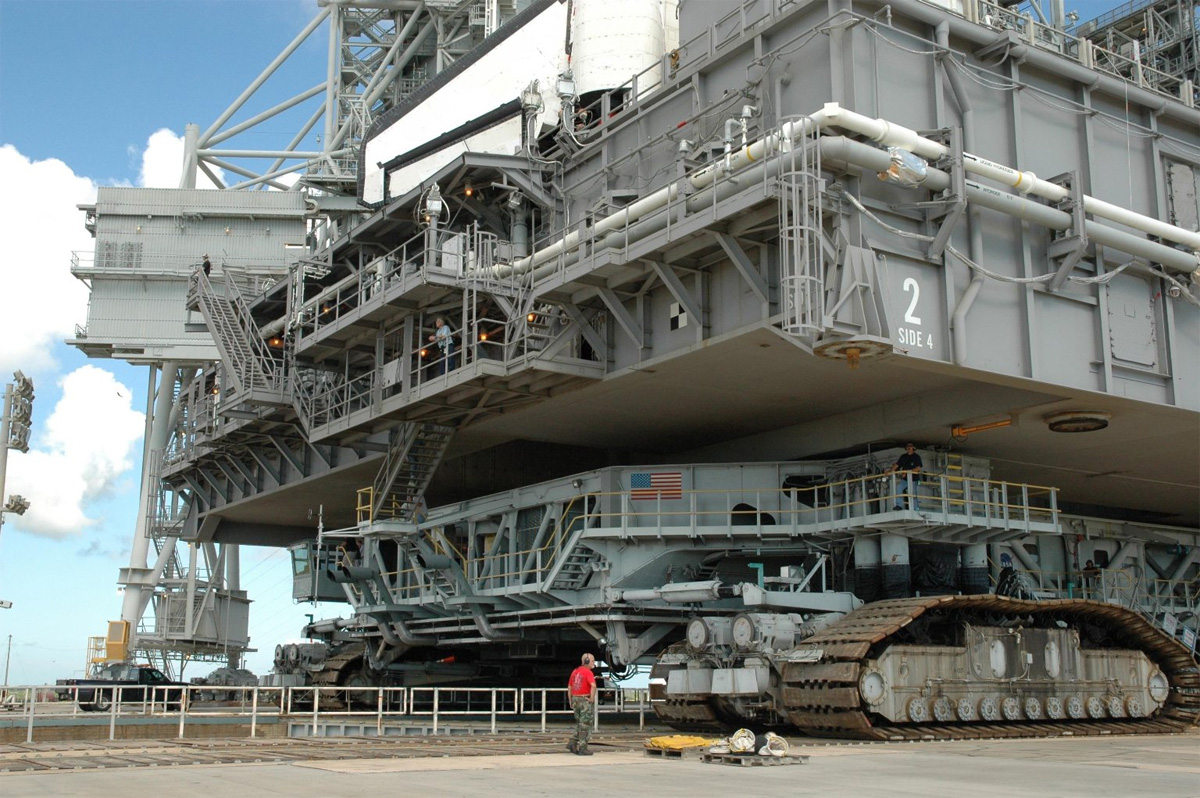
Picture: Jack Pfaller/NASA
September 30, 2007: A rainbow can be seen in the spray from the water truck travelling ahead of Space Shuttle Discovery on its move from the Vehicle Assembly Building to Launch Pad 39A.

Picture: George Shelton/NASA
October 20, 2009: The towering 327-foot-tall Ares I-X rocket of the later cancelled Constellation Program slowly making its way up the five per cent grade of the crawlerway on Launch Pad 39B.

Picture: Kim Shiflett/NASA
June 1, 2011: Bathed in xenon lights, space shuttle Atlantis embarks on its final journey from the Vehicle Assembly Building to Launch Pad 39A.

Picture: NASA
July 7, 2011: Having a rest after carrying the last space shuttle to the launch pad.

Picture: Attila Nagy/Gizmodo
The parallel marks on the crawlerway show where the transporter moved along.
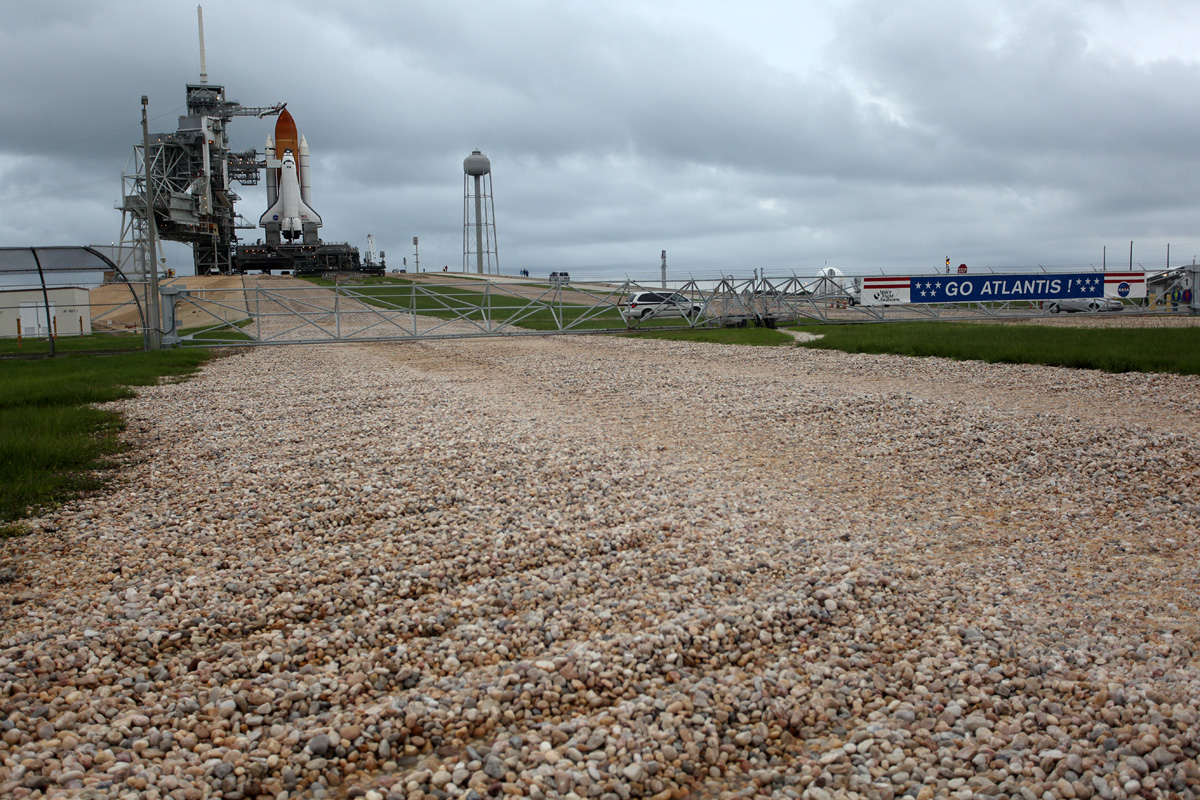
Picture: Attila Nagy/Gizmodo
November 16, 2011: A water truck leads the way spraying water on the dry crawlerway to reduce dust particles in the air, as the 355-foot-tall mobile launcher (ML) to support NASA’s Space Launch System (SLS) begins its move aboard a crawler-transporter.
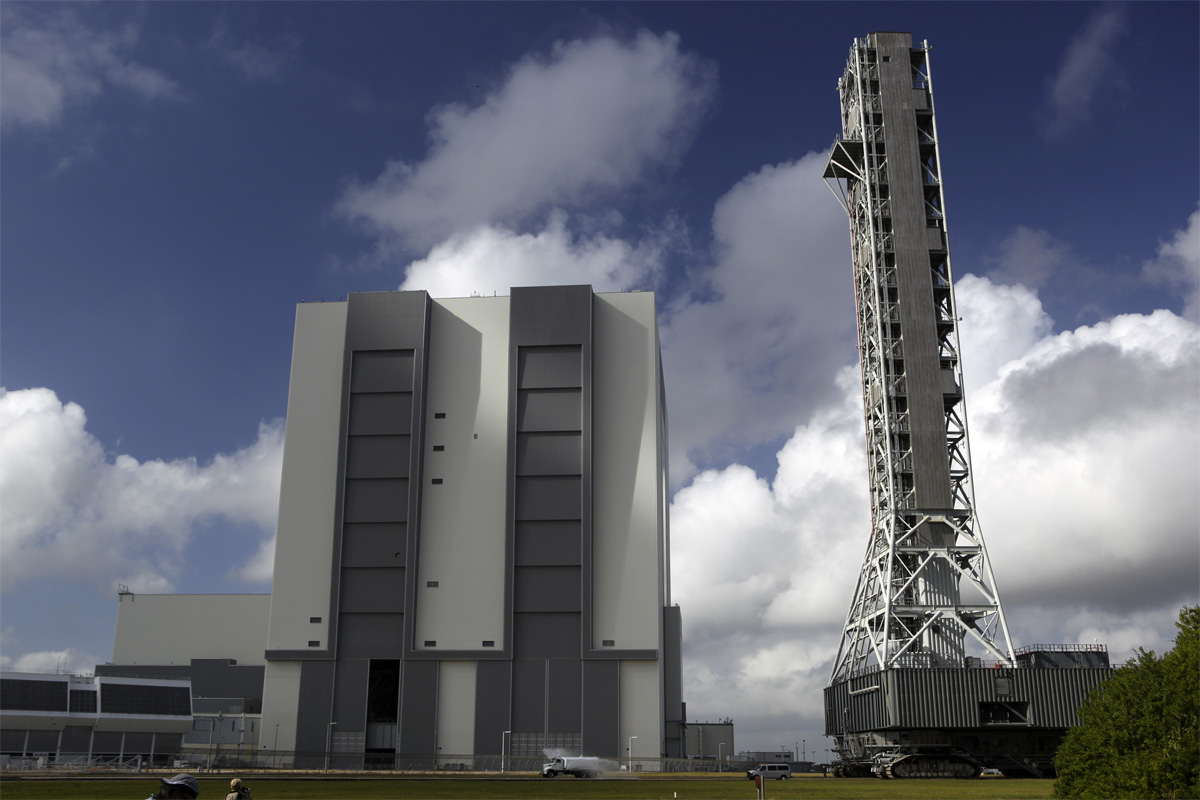
Picture: Dimitri Gerondidakis/NASA
Inside CT-2: The engine compartment 1 after placement of a new 1500 kw engine-generator set in 2012

Picture: NASATech
Inside CT-2: Steering hydraulic pump set
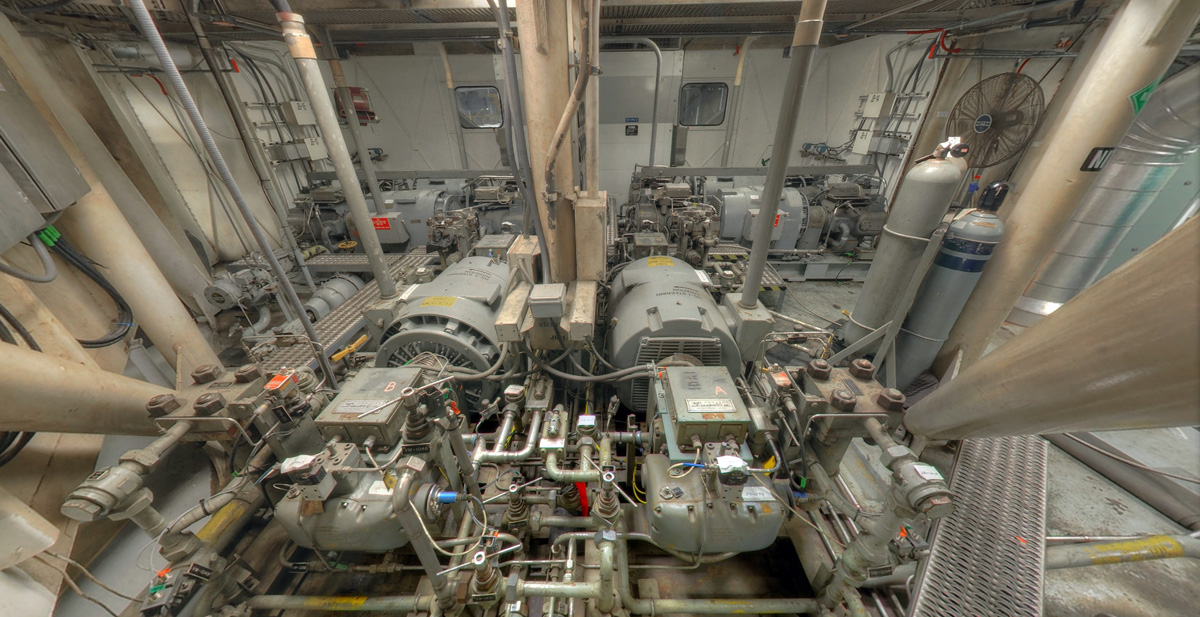
Picture: NASATech
Inside CT-2: At the Side 3 fuel tank
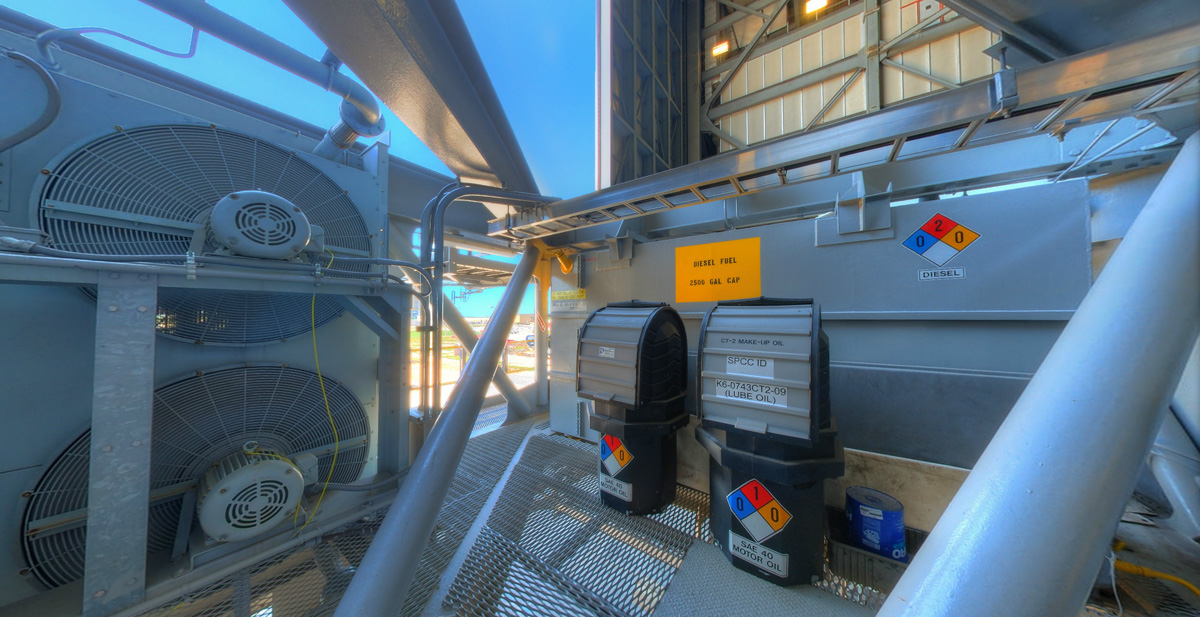
Picture: NASATech
Inside CT-2: Alco 2000 kw diesel engine-generator set
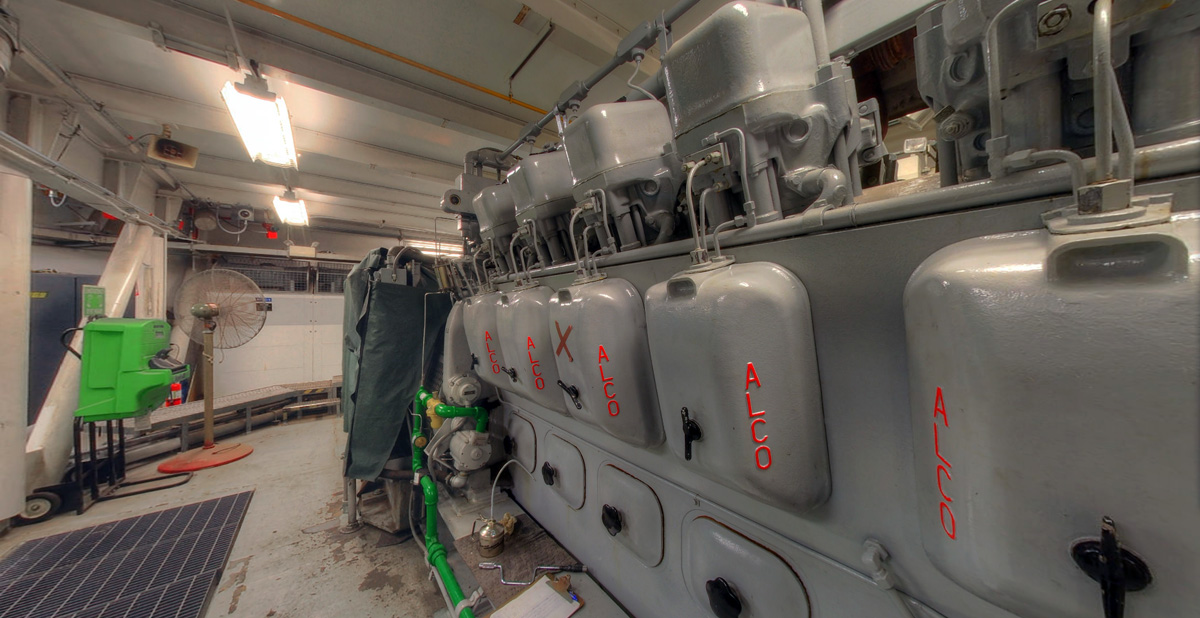
Picture: NASATech
November 14, 2012: Engineer Bill Couch, standing on the left, and technician Gary Milbourne, both of United Space Alliance, monitor the updated controls of crawler-transporter No. 2 as it moves out of high bay 2 of the Vehicle Assembly Building. The test drive is designed to check out recent modifications and upgrades.
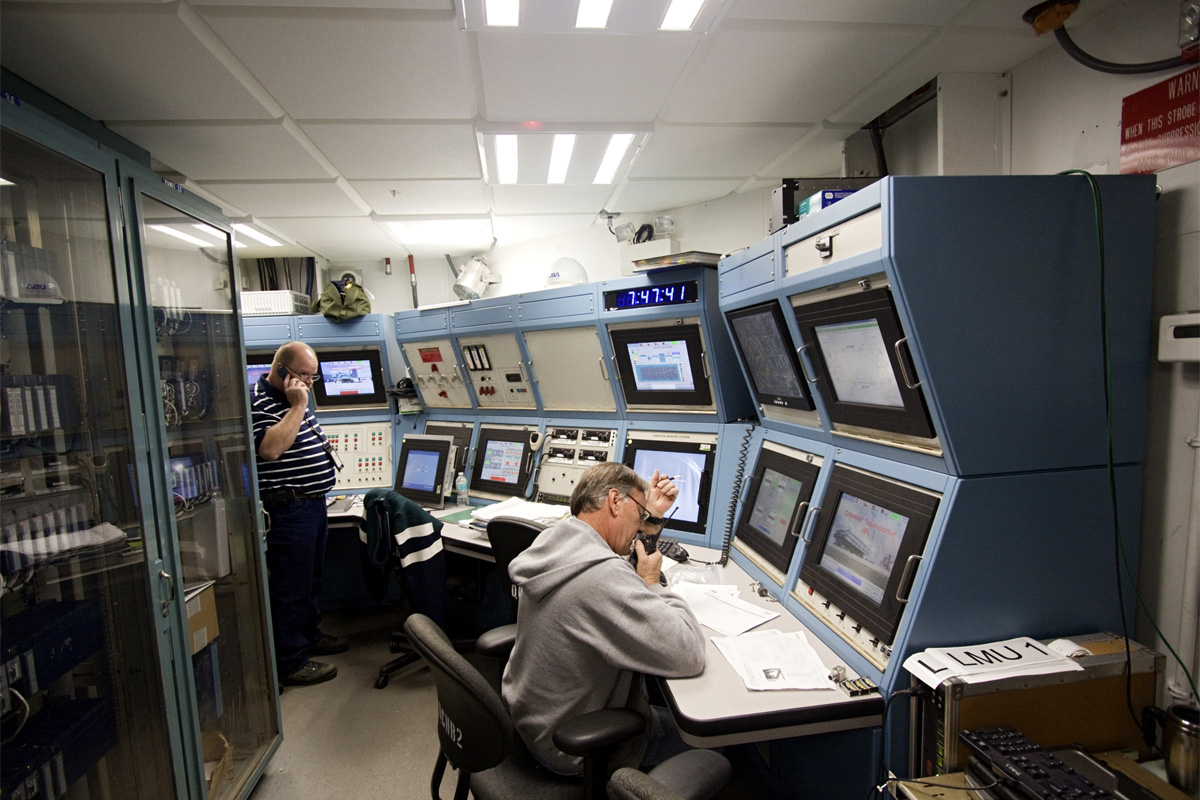
Picture: Jim Grossmann/NASA
February 11, 2013: CT-2 is on its way from the Vehicle Assembly Building to the Park Site west of the building. The transporter has new brakes and mufflers and a recently-painted white roof deck. Out in front is a truck spraying water to control the dust on the crawlerway.
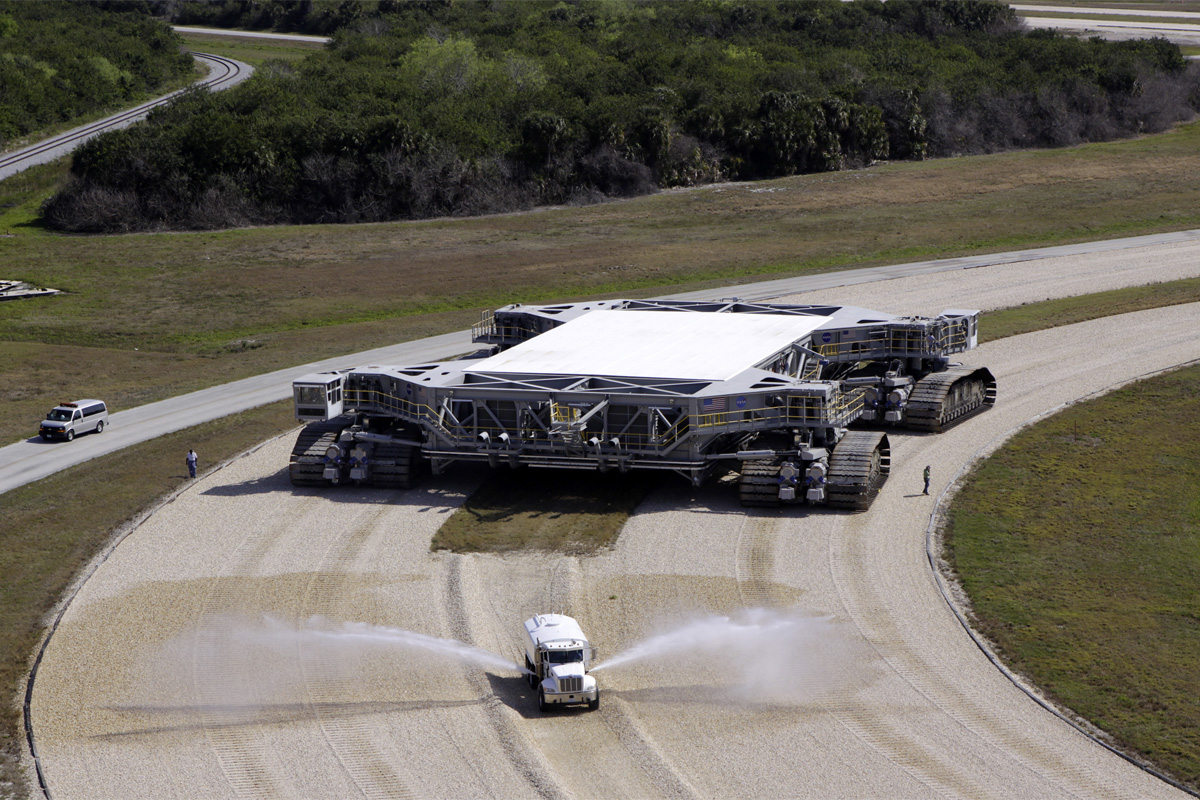
Picture: Jim Grossmann/NASA
April 17, 2014: Inside the Vehicle Assembly Building where work continues to upgrade CT-2. The modifications are designed to ensure CT-2’s ability to transport launch vehicles currently in development, such as the agency’s Space Launch System, to the launch pad.

Picture: Dimitri Gerondidakis/NASA
February 20, 2015: CT-2 on a test run to Launch Pad 39B to test out its upgraded systems.
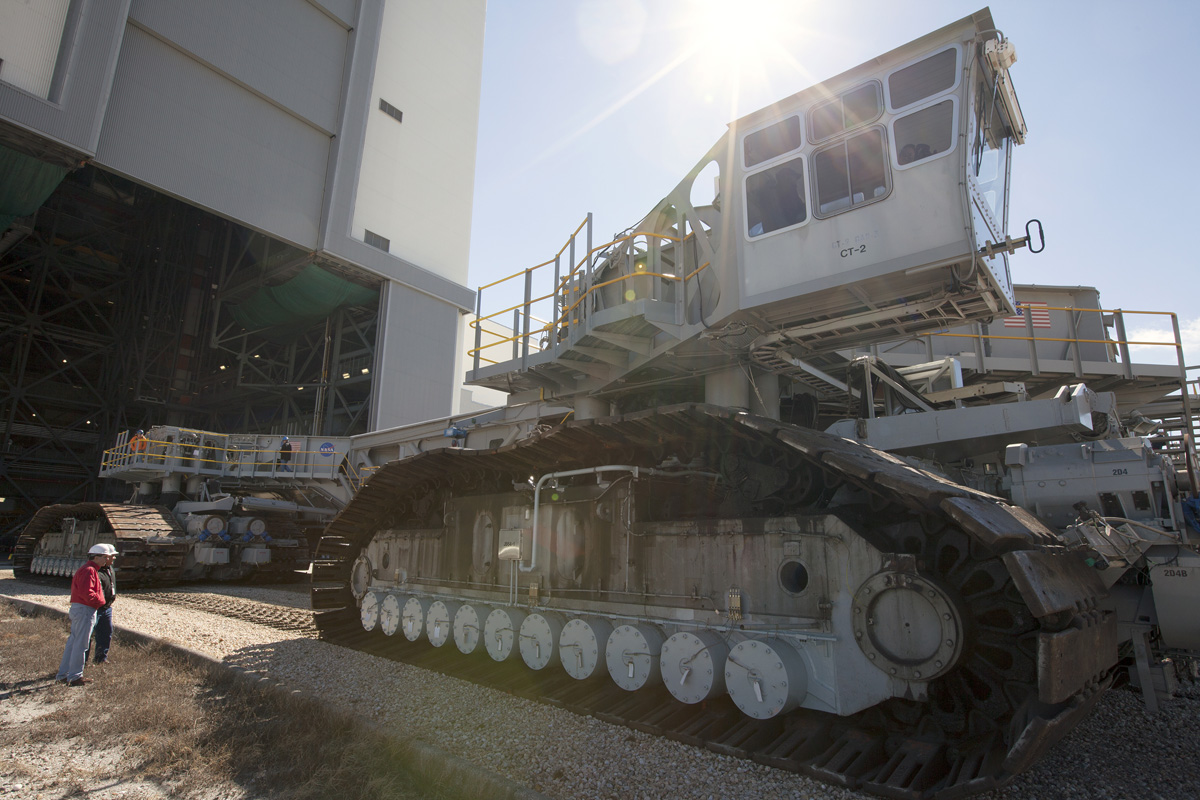
Picture: Kim Shiflett/NASA
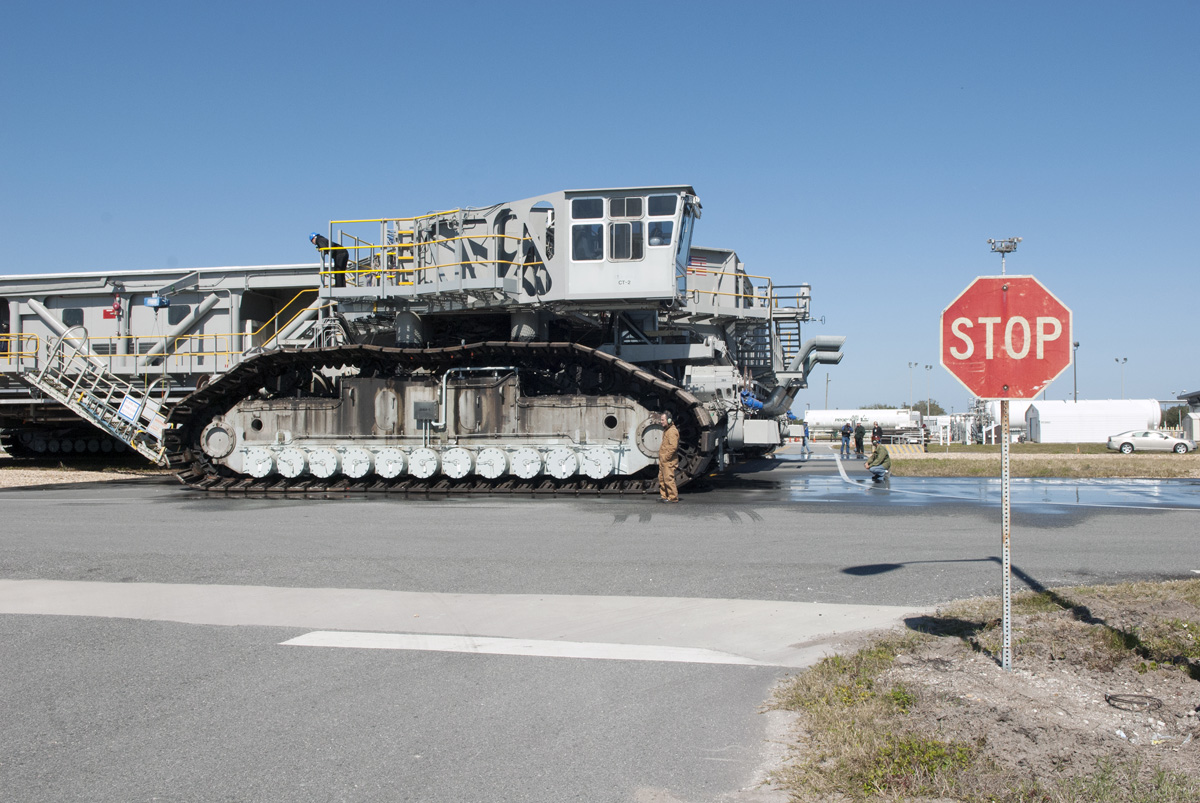
Picture: Amber Watson/NASA
